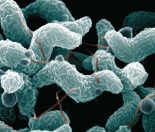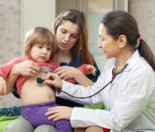Kiwi Families has provided helpful articles on salmonella and explains this common stomach bug, its signs and symptoms, treatment, risks & complications and how to prevent the spread of salmonella.
What is salmonella?
Salmonella is a common form of food poisoning that is caused by a group of bacteria called salmonella. The disease gets its name from the American scientist Dr Daniel Salmon who first discovered the bacteria.
The salmonella bacteria are passed from human and animal faeces to contaminate food stocks, water, soil and general surfaces. The bacteria also live in birds and reptiles such as pet turtles. Extra care should be taken with any pet that has diarrhoea.
Commonly salmonella infections are caught from foods that have not been properly handled such as poultry, raw meats, dairy products (including soft cheeses and raw milk), eggs, seafood and any food that has been handled by someone who is infected with the bacteria. Chicken and eggs pose a very high risk of salmonella infection.
Proper cooking normally kills the bacteria.
There is an increasing incidence of salmonella poisoning in New Zealand and children are the most likely to be infected.
The symptoms of salmonella poisoning start around 12 – 72 hours after exposure to the virus and continue for 4 – 7 days.
What are the signs and symptoms of salmonella?
- Diarrhoea – which can be blood stained
- Abdominal cramps
- Fever
- Nausea
- Headaches
What is the treatment for salmonella?
- Your doctor will need a stool (bowel motion) sample to confirm that the cause of illness is salmonella.
- Most people recover without needing any formal treatment
- Children, the elderly and those with impaired immune systems who suffer more severe symptoms may need hospitalisation, to treat diarrhoea and/or dehydration
- They may also need treatment with antibiotics
Risks & complications of salmonella
In some cases people who have had salmonella poisoning can develop Reiter’s syndrome which gives painful joints, irritated eyes and painful urination. The condition can last for months and lead to a chronic and hard-to-treat arthritic condition.
The infection can travel from the bowel to bloodstream and affect other body organs. In severe cases this can result in death.
One form of salmonella bacteria (typhoidal salmonella) can lead to typhoid fever, though this is rare. (Typhoid mainly occurs in underdeveloped countries with poor sanitation).
Some salmonella bacteria have become resistant to common antibiotics, largely due to the use of antibiotics in animal husbandry.
What can I do to prevent the spread of salmonella?
- Parents have a huge influence on the lifelong hygiene habits their children will develop. Impress upon children the importance of washing hands regularly and properly – especially after using the toilet and after handling pets.
- Model and teach good hygiene practices to your children – A good hand wash lasts 20 seconds minimum, involves plenty of soap, a good rinse and a thorough dry
- Reptiles pose a very high risk of transferring salmonella – eg. lizards, turtles
- Take extra care with any pets that have diarrhoea
Practise good food handling techniques:
- Always take extra care with food for babies and children
- Do not feed your children raw or undercooked chicken, meat or eggs
- Do not serve young children poached or soft fried eggs
- Do not give your children unpasteurized milk
- Raw foods (especially chicken and meats) should always be dealt with separately to cooked foods and all cutting boards and knives carefully washed after use
- Store raw foods on the lowest shelf in the refrigerator, so that meat juices do not contaminate other foods
- Cook foods thoroughly and serve piping hot
- Do not reheat food more than once
- Keep food storage and preparation areas very clean
- Thoroughly wash all fruits and vegetables
- Discard out-of-date food
- Defrost food safely – ensure food is fully defrosted before cooking
- Throw out leftovers that have been left at room temperature for more than two hours
- If you are ever in doubt about food quality, throw it out
If your child is suffering from fever please refer to our article on Fever in this health section.
Helpful Articles
For advice on when to call the doctor for a sick child see our Kiwi Families article Emergency Check List







